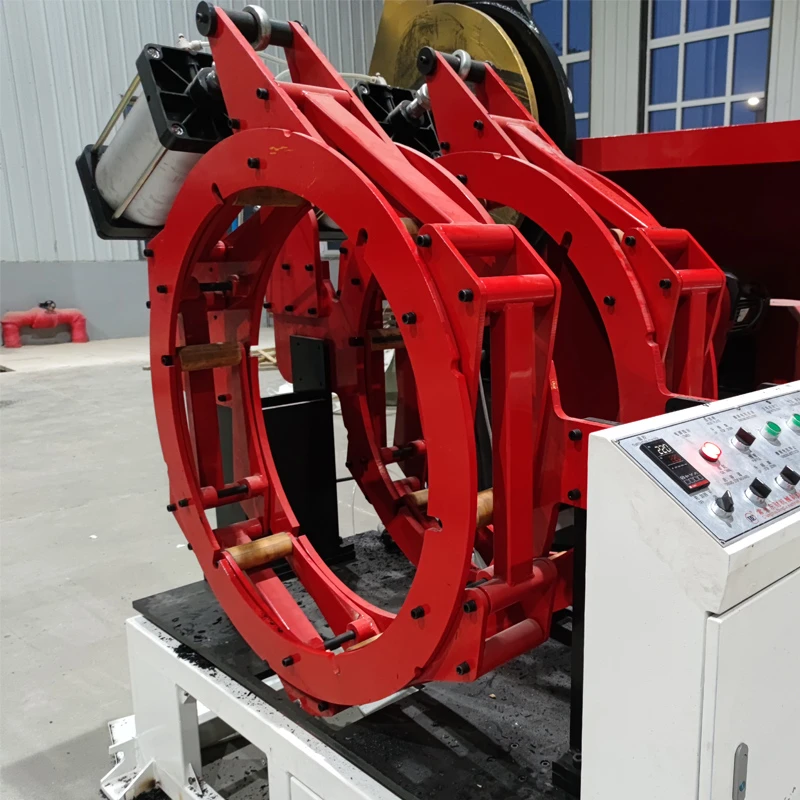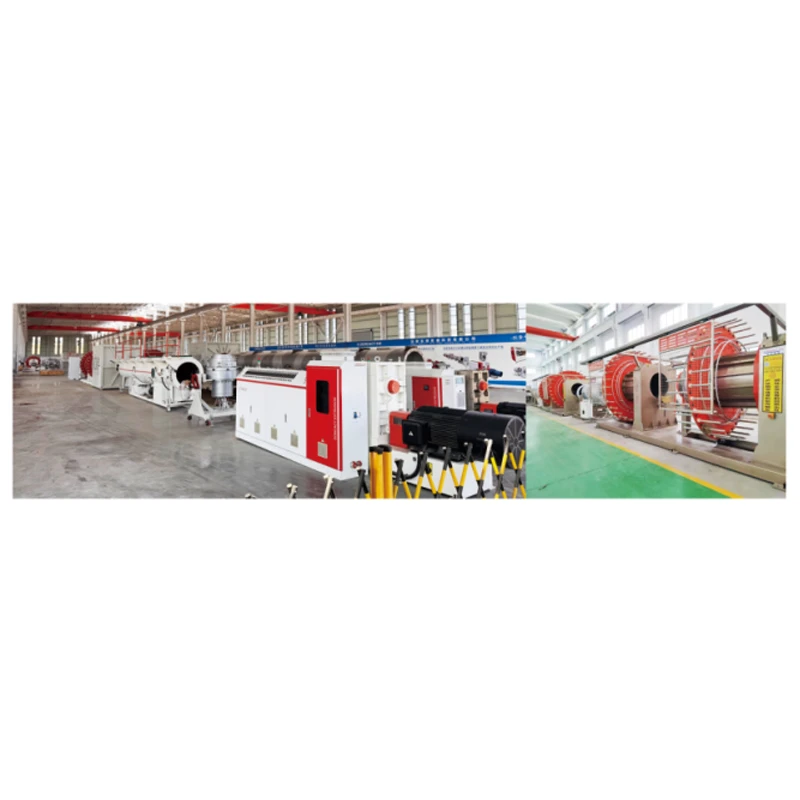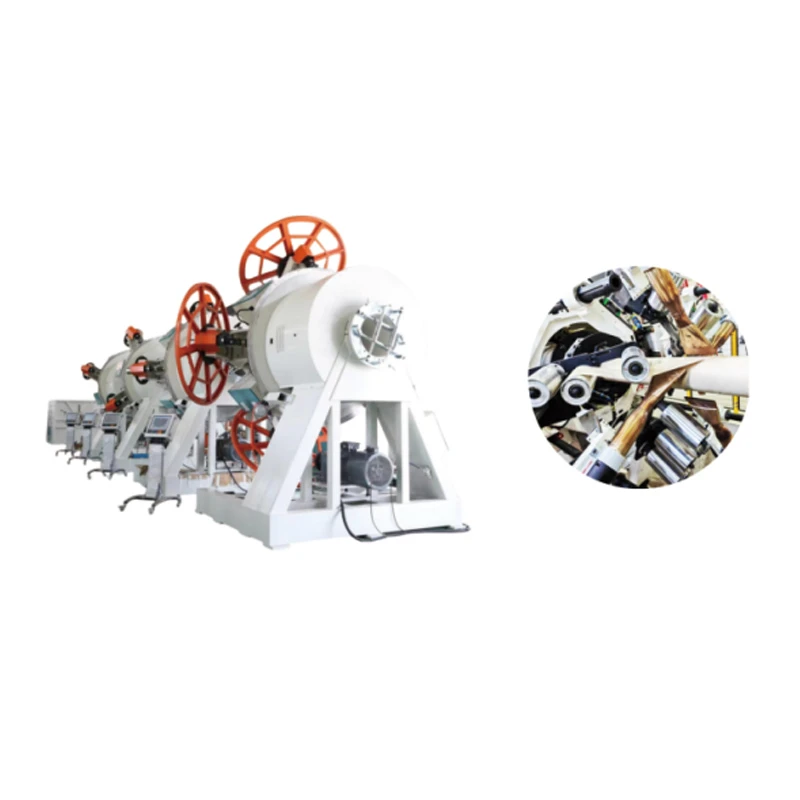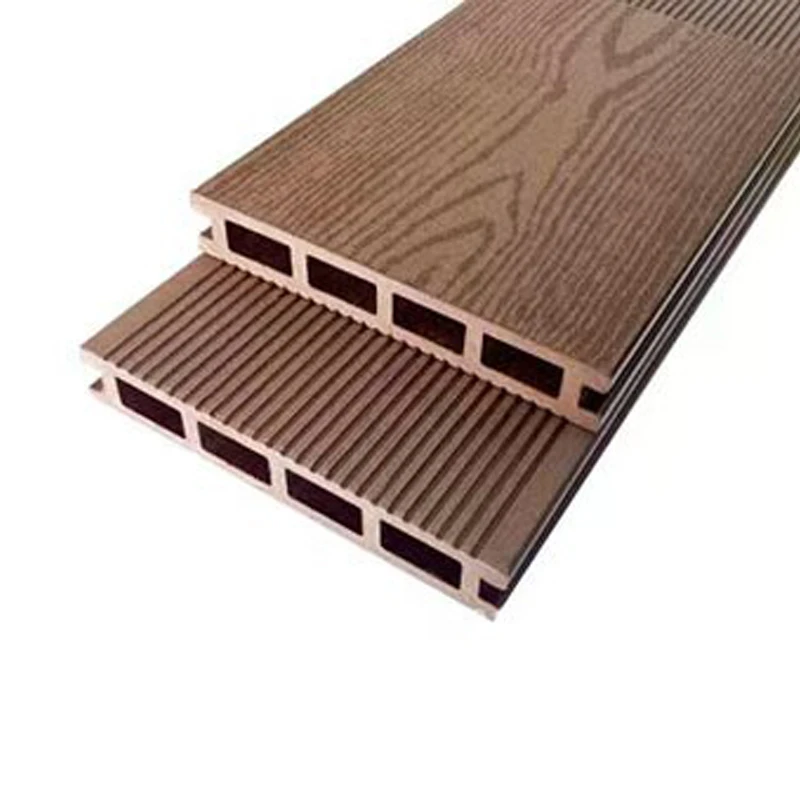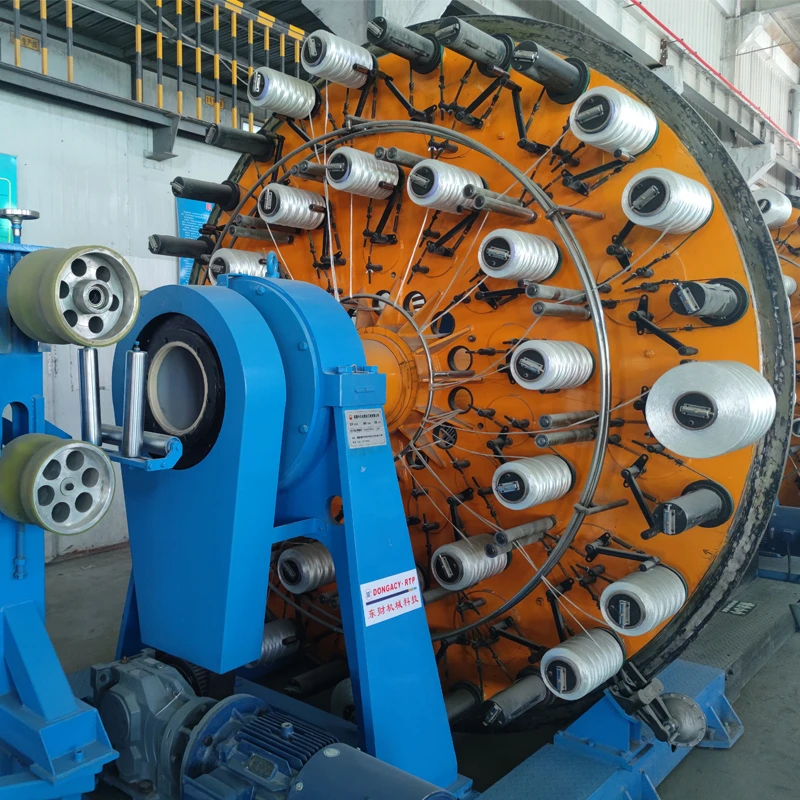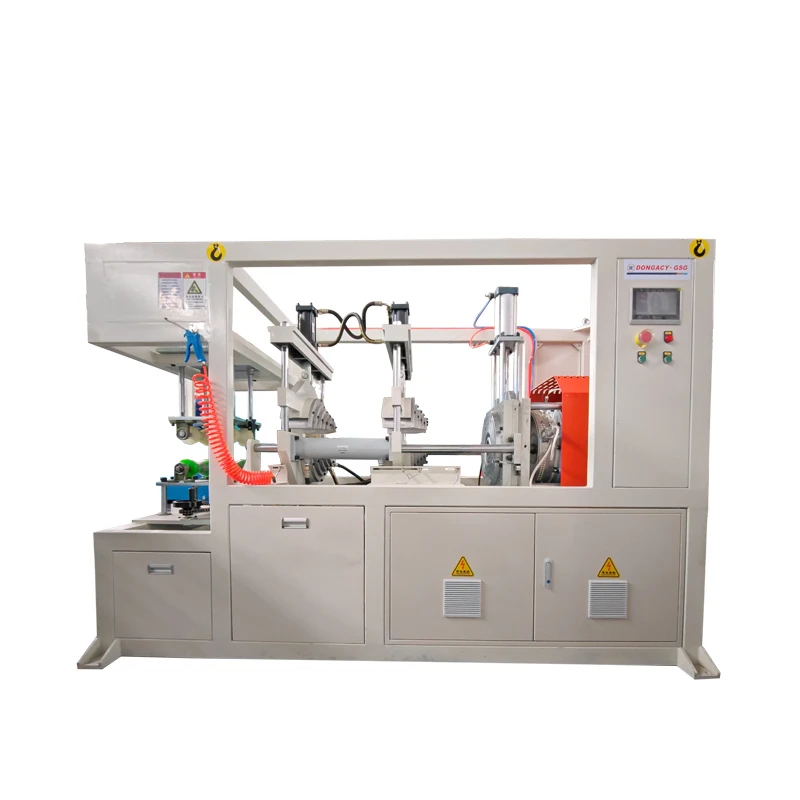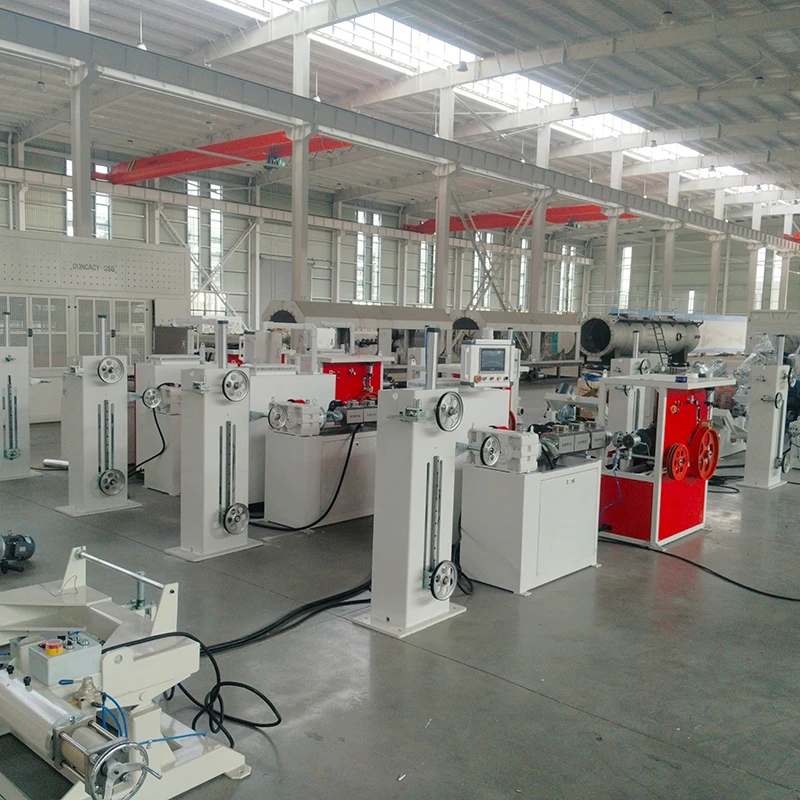
The global demand for plastic pipes continues to grow rapidly due to their lightweight, corrosion resistance, and ease of installation compared to traditional metal pipes. To meet this rising demand efficiently, manufacturers are investing in state-of-the-art plastic pipe production lines that offer high throughput, consistent quality, and flexibility across various pipe sizes and materials.
A complete plastic pipe production line integrates several components, including the extruder, die head, calibration system, haul-off unit, cutter, and stacker. Together, they ensure the seamless conversion of plastic resin into finished pipes suitable for applications such as water supply, gas distribution, drainage, and electrical conduits.
By adopting an advanced production line, manufacturers can reduce waste, lower labor costs through automation, and increase production speeds. This leads to improved profit margins and the ability to meet tight delivery schedules. Investing in a reliable plastic pipe production line is a strategic move for businesses seeking sustainable growth in the highly competitive pipe manufacturing sector.
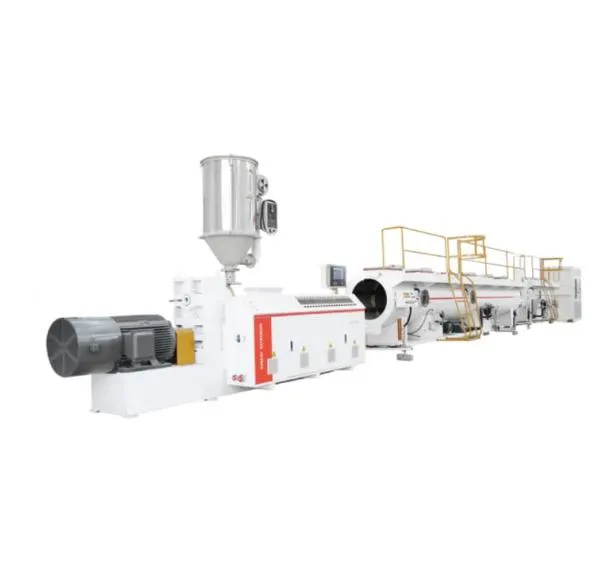
Essential Features of a Modern Plastic Pipe Extrusion Line
At the heart of any plastic pipe extrusion line lies the extruder, a machine responsible for melting and homogenizing plastic resin to form a continuous pipe profile. The performance and design of the extruder greatly influence the quality and efficiency of the entire production process.
High-quality plastic pipe extruders feature high-torque, energy-efficient motors paired with precision-engineered screws and barrels. These components optimize plastic melting, mixing, and pressure generation, accommodating materials such as PE, PP, PVC, and composites.
Temperature control is critical in extrusion; thus, modern extruders incorporate multiple heating zones and sophisticated control systems to maintain uniform melt conditions. This prevents degradation of the polymer and ensures the final pipe meets strict dimensional and mechanical standards.
Additionally, advanced plastic pipe extrusion lines often include vacuum calibration tanks that shape and solidify the pipe immediately after extrusion, automated haul-off units to maintain tension and speed, and high-precision cutting systems for consistent pipe lengths.
Choosing the Right Plastic Pipe Extruder for Your Production Needs
Selecting the ideal plastic pipe extruder depends on several factors, including the type of plastic material, pipe diameter range, desired output, and automation requirements.
Single-screw extruders are commonly used in plastic pipe production due to their simplicity and efficiency, particularly for materials like PE and PVC. Twin-screw extruders, on the other hand, provide enhanced mixing and are preferred when processing composite materials or when higher uniformity is needed.
Capacity is a key consideration: extruders are available in various screw diameters and lengths, which correlate directly with throughput. Choosing an extruder that matches your production goals prevents underutilization or bottlenecks.
Furthermore, compatibility with downstream equipment such as die heads and vacuum tanks ensures smooth integration within the plastic pipe extrusion line, maximizing productivity and pipe quality.
How Plastic Pipe Production Line Manufacturers Support Your Success
The choice of your plastic pipe production line manufacturer plays a vital role in the long-term performance and scalability of your production facility. Trusted manufacturers bring a wealth of experience, robust design expertise, and comprehensive after-sales service to the table.
Leading manufacturers customize production lines tailored to client specifications, including pipe diameters, wall thicknesses, and material formulations. They assist in layout design, installation, and operator training, helping you get the most out of your investment.
Moreover, established plastic pipe production line manufacturers adhere to international quality and safety standards, ensuring machinery reliability and regulatory compliance. Their commitment to spare parts availability and technical support minimizes downtime and protects production continuity.
Engaging with a reputable supplier is essential for maintaining competitive advantage in the fast-evolving plastic pipe market.
Applications Driving Demand for Plastic Pipe Extrusion Lines
Plastic pipes are indispensable in a wide variety of applications, which drives ongoing innovation in extrusion technology. Water supply networks, gas distribution systems, sewage and drainage infrastructure, irrigation systems, and cable protection all rely heavily on plastic pipes.
The versatility of plastics allows for customization of pipe properties such as flexibility, UV resistance, chemical stability, and mechanical strength. Multi-layer pipes combining different materials for enhanced performance are becoming increasingly popular, requiring extrusion lines capable of co-extrusion and precise layer control.
Additionally, growing environmental awareness encourages the adoption of extrusion lines that can process recycled plastics, promoting sustainability without compromising product quality.
Manufacturers with flexible and efficient plastic pipe extrusion lines are well positioned to serve these dynamic markets with innovative products.
Maintenance Tips to Maximize Your Plastic Pipe Extrusion Line Performance
Proper maintenance is crucial for ensuring the longevity and consistent output of your plastic pipe production line. Regular cleaning of extruder screws, barrels, and dies prevents contamination and buildup that could impair product quality.
Monitoring and maintaining optimal temperature zones within the extruder helps avoid polymer degradation and enhances pipe properties. Scheduled inspections and servicing of vacuum calibration tanks, haul-off units, and cutting machines reduce the risk of unexpected breakdowns.
Training operators on correct machine operation, troubleshooting techniques, and quality control standards improves production stability and reduces waste.
Partnering with your plastic pipe production line manufacturer for ongoing support and use of genuine spare parts ensures your equipment performs at peak efficiency over the years.
plastic pipe production line FAQs
What materials can be processed on a plastic pipe extrusion line?
Typical materials include polyethylene (PE), polypropylene (PP), polyvinyl chloride (PVC), and composite blends. The line configuration can be adapted based on the material’s processing characteristics.
How do I determine the right size for my plastic pipe extruder?
Consider your required production capacity, pipe diameter range, and material type. Consult manufacturers to match extruder size and specifications with your production goals to avoid inefficiencies.
Can a plastic pipe extrusion line produce multi-layer pipes?
Yes, some advanced lines support co-extrusion technology, allowing multiple layers of different materials for enhanced performance such as corrosion resistance and mechanical strength.
How long does installation and commissioning of a plastic pipe production line usually take?
Installation time varies but typically ranges from 3 to 8 weeks depending on project complexity. Manufacturers often provide on-site support and operator training to ensure smooth startup.
How often should maintenance be performed on a plastic pipe extrusion line?
Routine cleaning and inspections should be done daily or weekly depending on usage. More comprehensive maintenance and part replacement schedules are typically recommended by the manufacturer based on hours of operation.
-
Innovative Solutions in PVC Pipe Production LineニュースJul.18,2025
-
Innovative Solutions in Pipe Extrusion Production LineニュースJul.18,2025
-
Advanced Plastic Profile Extrusion SolutionsニュースJul.18,2025
-
PVC Profiles: The Future of Durable and Cost-Effective Construction SolutionsニュースJun.06,2025
-
PVC Pipe Extrusion LineニュースJun.06,2025
-
High-Quality Polyethylene Pipe Production LineニュースJun.06,2025
-
High-Performance Tube Production LineニュースJun.06,2025

